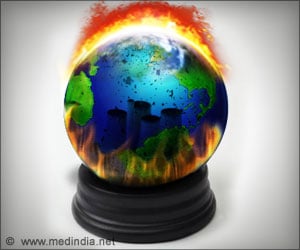Glacier melting is undoubtedly caused by human activities and the extent of interactions between the biosphere and the human species in recent centuries.

The report suggested that drastic measures should be adopted at the forthcoming United Nations Climate Change Conference to prevent further deterioration of the glaciers in Italy and worldwide.
With respects to the Italian Alps, the report said, "Glaciers currently cover a total area of about 368 sq. kms compared to 609 sq. kms in the 1980s." The lastest figures came from the New Italian Glacier Inventory, which was presented at the 19th Alpine Glaciology meeting held in May, 2015 in Milan. These figures were compared with the 1989 World Glacier Inventory (WGI) based on data collected in the 1980s. The comparison revealed an area reduction of over 39%.
Researches said, "Glacier melting is undoubtedly caused by human activities and the extent of interactions between the biosphere and the human species in recent centuries is unprecedented."
Bologna said, "The scientific community has been coordinating the collection of standardized data about glaciers worldwide since the end of 18th century. We have seen them retreating slowly for over a century, and much more sharply in the last 50 years."
The Arctic and Antarctica are most affected by the melting process, but also glaciers around the world, such as in the Himalayas, Patagonia, Alaska, the Ural Mountains, and the Alps. The European Union Emission Database for Global Atmospheric Research (EDGAR) suggests that the global emissions of carbon dioxide (CO2), which is the main greenhouse gas produced by human activities and most responsible for global warming, have indeed risen to 35.3 billion tonnes per year in 2013 from 22.6 billion tonnes in 1990.
Advertisement
Source-IANS








